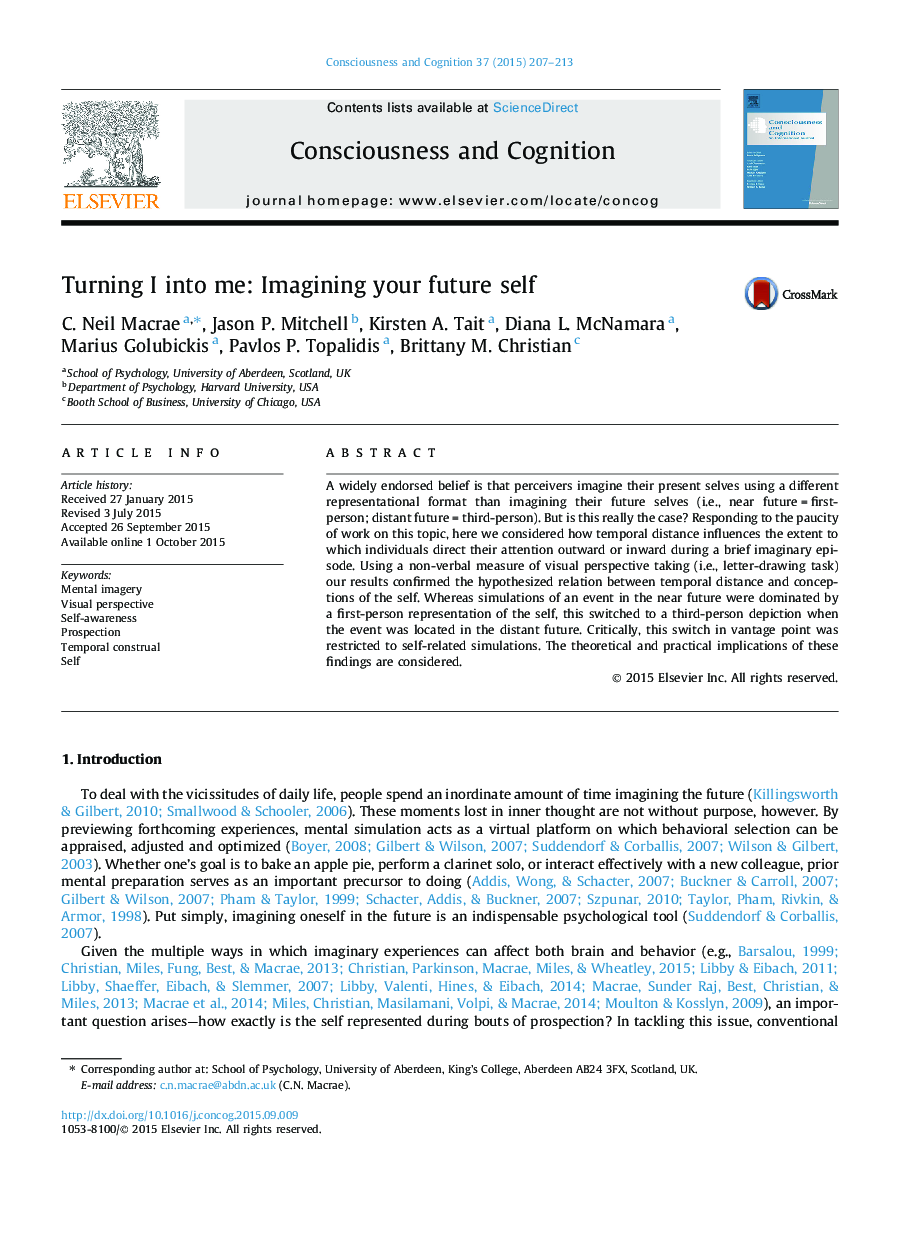| کد مقاله | کد نشریه | سال انتشار | مقاله انگلیسی | نسخه تمام متن |
|---|---|---|---|---|
| 927552 | 1474174 | 2015 | 7 صفحه PDF | دانلود رایگان |
• Imagined representations of the self differ through time.
• Vantage-point differences in visual imagery can be revealed using a non-verbal task.
• Near-future imagery elicits first-person (i.e., actor) depictions of the self.
• Far-future imagery elicits third-person (i.e., observer) depictions of the self.
A widely endorsed belief is that perceivers imagine their present selves using a different representational format than imagining their future selves (i.e., near future = first-person; distant future = third-person). But is this really the case? Responding to the paucity of work on this topic, here we considered how temporal distance influences the extent to which individuals direct their attention outward or inward during a brief imaginary episode. Using a non-verbal measure of visual perspective taking (i.e., letter-drawing task) our results confirmed the hypothesized relation between temporal distance and conceptions of the self. Whereas simulations of an event in the near future were dominated by a first-person representation of the self, this switched to a third-person depiction when the event was located in the distant future. Critically, this switch in vantage point was restricted to self-related simulations. The theoretical and practical implications of these findings are considered.
Journal: Consciousness and Cognition - Volume 37, December 2015, Pages 207–213
